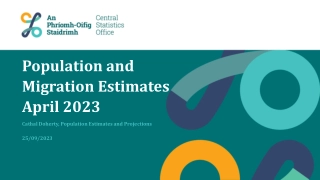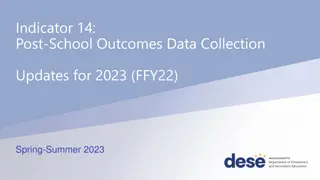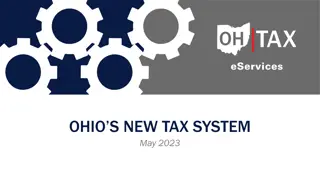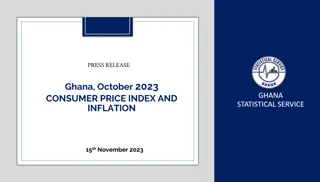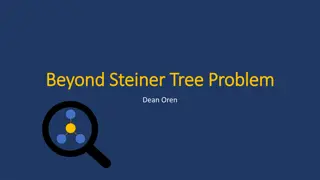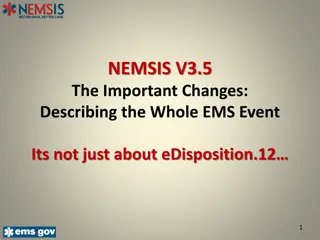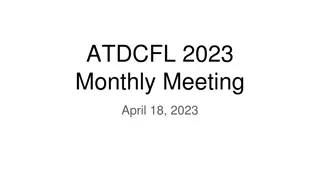2023 and Beyond
Health MCAS filing for 2023 and beyond involves complex data elements, claims volume, and validations in the health industry. Learn why health data is fundamentally different, the challenges it poses, and the manual nature of the workflow involved in the process.
Download Presentation

Please find below an Image/Link to download the presentation.
The content on the website is provided AS IS for your information and personal use only. It may not be sold, licensed, or shared on other websites without obtaining consent from the author.If you encounter any issues during the download, it is possible that the publisher has removed the file from their server.
You are allowed to download the files provided on this website for personal or commercial use, subject to the condition that they are used lawfully. All files are the property of their respective owners.
The content on the website is provided AS IS for your information and personal use only. It may not be sold, licensed, or shared on other websites without obtaining consent from the author.
E N D
Presentation Transcript
Health MCAS Filing Date 2023 and Beyond Samantha Burns, AHIP Joe Zolecki, BCBSA July 21, 2022
Background October 2019 MCAS Working Group UNANIMOUSLY approves June 30 Health submission 2020, 2021, 2022 December 2019 D Committee UNANIMOUSLY approves June 30 Health 2020, 2021, 2022 2023 Health submission reverts to April 30
Health IS Fundamentally Different Data Elements Claims Volume Data Validation Data Elements OTHER LINES Claims Volume Data Validation HEALTH
WHY is Health Different? MORE DATA MORE COMPLEX LESS AUTOMATED
DATA # of Claims # of Data Elements # of Data Stratifications Health 3.4 BILLION (2020 CAQH) 146 (NAIC) 21 (NAIC) Including: On/Off Exchange Single/Multi State Transitional (GF)/Non-Transitional Individual/Small Group/Large Group Bronze/Silver/Gold/Platinum Plans In/Out of Network Behavioral Health/ Medical Rx/Non-Rx claims Homeowners 3.5 million (2020 Quicken Loans) 37 (NAIC) 5 (NAIC) Life 1.5 million (2021 NAIC) 37 (NAIC) 2 (NAIC) Long-Term Care 300,000 (2018, AALTCI) 45 (NAIC) 3 (NAIC)
COMPLEXITY Supplemental Health Care Exhibit (April 1 filing) Many Federal & State Reporting Requirements After April 30 Cross Referencing Validation Attestation COMPLEXITY (e.g. CMS Rx Data Collection) Programming Querying Aggregating External Data Input (e.g. Behavioral Health, Rx)
Manual Nature of MCAS Health Workflow NAIC waits for Annual Statements and SHCE NAIC Requirements (final NAIC Code & State released early April) Business review & approval (mid/late May) Approve, delegate or send back for correction Internal Testing Approve or send back Certification Verify final claim payment for data year (1st week April) Perform quality edit checks & data review, including processing Errors & Warnings Report, correcting and Business Explanations (mid-May) Attest and send back for submission to NAIC Attestation Review and document (mid-April) Create CSV Files (<1 MG) (early June) Initiate data capture for Review, Member & Claim (mid/late April) Combine all data sources (late April, early May) Make changes to programs as needed for new updates and changes required (mid/late April) Work with NAIC for Data Upload Issues (early June) Request Other Non- integrated data (mid/late April) Request Grievance & Appeal File (mid/late April) Request Prior Auth File (mid/late April) Upload CSV Files to NAIC MCAS Portal (early June) Obtain & Verify On & Off- Exchange Business (mid/late April) Request Substance Abuse & Mental Health Parity File (mid/late April) Obtain Report from Legal for Officers (mid/late April) Illustrative
Reasons June 30 Filing Makes Sense Increases data completeness when filed at the conclusion of the 2nd quarter (June) rather than the beginning of 2nd quarter (April) claims reconciliation. Regulators and carriers both benefit from having the information more accurate rather than just fast. Increases data accuracy and avoids false identification of outliers causing unnecessary work for regulators and carriers. Decreases the need for carrier extension requests. Allows regulators to engage in more targeted market conduct exams relying on more accurate and useful data. The Tortoise or the Hare?




